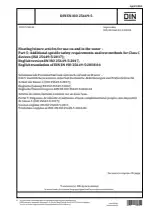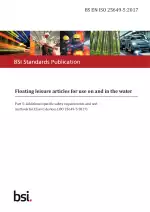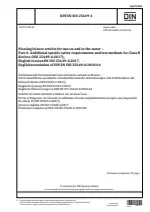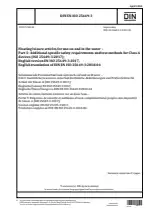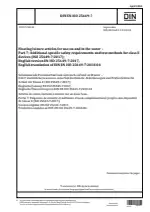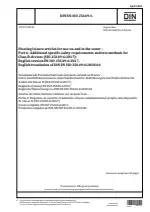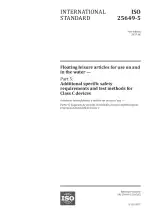Floating leisure articles for use on and in the water - Part 5: Additional specific safety requirements and test methods for Class C devices
Also Known As:
The DIN EN ISO 25649-5 standard was created to specify the safety criteria and testing procedures for Class C floating recreational items intended for use on and in water. Any product that has been assigned a Class C classification by EN ISO 25649-1 is covered by this standard, regardless of how the buoyancy was achieved—through inflation or naturally buoyant material.
The requirements and test procedures provided in EN ISO 25649-5 are to be used in conjunction with those outlined in EN ISO 25649-1 and EN ISO 25649-2, according to the standard. Items that fit into the Class C category include towable rafts, boards, and banana-style items, as well as towable tube riders with an interior holding area and a closed cockpit.
The standard also offers instructions on the typical locations where Class C floating leisure articles should be used. These consist of locations that are removed from popular swimming spots and other water surfaces, large open areas, and designated racetracks or parcours. It is crucial to remember that these items are only meant to be used in locations with weak currents and little to no wave activity.
| Descriptors | Aquatic sports equipment, Aquatic toys, CE marking, Classes, Classification, Consumer information, Definitions, Design, Equipment safety, Fitness for purpose, Floating, Glides, Leisure, Leisure equipment, Operational instructions, Performance, Product information, Recreational equipment, Risk, Safety, Safety engineering, Safety of products, Safety requirements, Testing, Towing equipment, Use |
| ICS Codes | 97.220.40 - Outdoor and water sports equipment |
| Language(s) | English |
| File Size | 2.4 MB |

